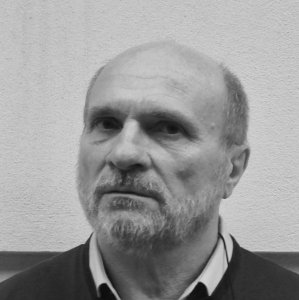
Elio Grazioli
Elio Grazioli teaches Contemporary Art Histry at the Academy of Fine Arts and University of Bergamo. Co-director with Marco Belpoliti of the Riga series of six-monthly monographic publications, he has also edited the Italian translations of various volumes by Rosalind Krauss, including Teoria e storia della fotografia (1996), L’informe. Istruzioni per l’uso (2003), L’inconscio ottico (2008), and has authored Ugo Mulas (2010), Corpo e figura umana nella fotografia (1998), Arte e pubblicità (2001) and La polvere nell’arte (2004).
Author's books
Album
L'arte contemporanea per sovrapposizioni
Elio Grazioli
pages: 172 pages
Copying works of art is a critical exercise that helps to train the eye and to make thoughts concrete. As an art critic and historian, Elio Grazioli argues for this in the most effective way: by putting it into practice. In fact, this “album” gathers together over 50 drawings by him, swift sketches executed with improvised materials during lock
Duchamp oltre la fotografia
Strategie dell'infrasottile
Elio Grazioli
pages: 88 pages
From the start of his career Duchamp developed a fertile relationship with photography, which runs through his work at several levels, charging his medium with new potential. A device that sees but does not choose, that picks up fragments of reality without the direct intervention of the artist’s hand makes the camera a perfect match for Duchamp�
Un desiderio ardente
Alle origini della fotografia
Geoffrey Batchen
pages: 256 pages
Before it was seen as a technology, at its outset photography sprang from a burning desire to capture the images produced in the camera obscura. This desire, which can also be seen in Dürer's work and has roots in the founding legend of art, grew in force between the late eighteenth and early nineteenth centuries, when the romantic redefinition of
L'immagine come punto interrogativo o il valore estatico del documento surrealista
Clément Chéroux
pages: 48 pages
This short essay explores the characteristic use of photographic images in Surrealism between the end of the nineteenth and the beginning of the twentieth centuries. In particular the Surrealists chose functional images with a documentary or informative purpose, decontextualising them in their art in order to raise questions and unsettle the viewer
La collezione come forma d’arte
Elio Grazioli
pages: 128 pages
If it can be said that every era has its own approach to collecting, the contemporary period is marked by a reciprocal bond with artistic practice, to the point that the two activities often overlap or even merge. Examples abound: from Joseph Cornell, who hunted down oddities to put in his mysterious boxes, to Claes Oldenburg, who exhibited a colle




